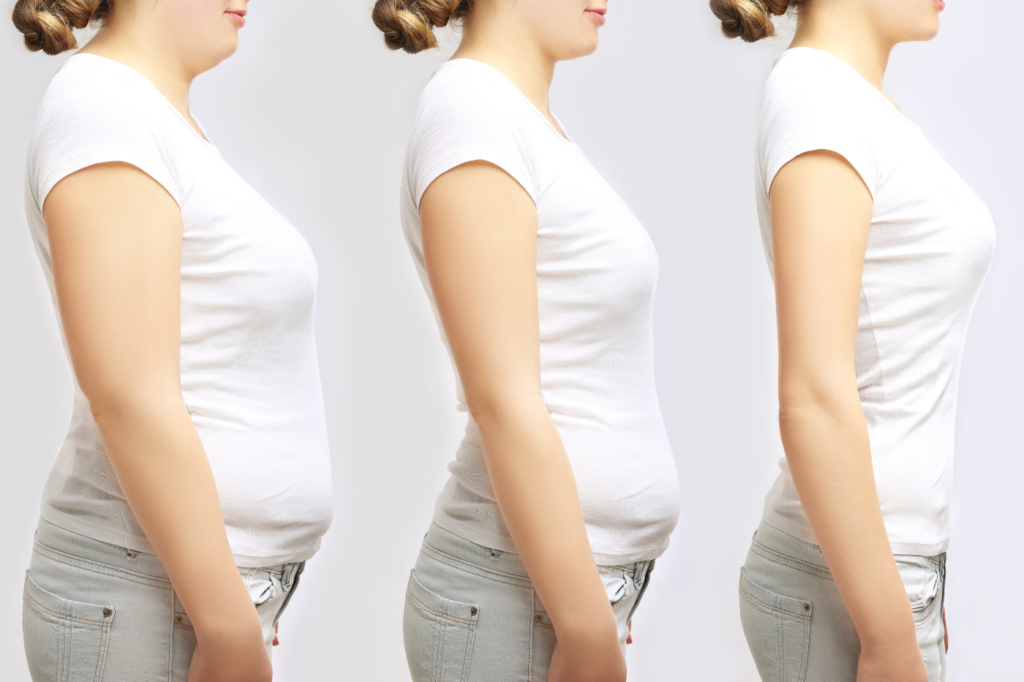There’s no shortage of fad diets out there. One that has been making the rounds most recently is the sirtuin diet, with the singer Adele even giving it credit for her recent weight loss.
What is the sirtuin diet? The sirtuin diet, also known as the Sirtfood Diet, is a two-phase eating plan. It’s focused on foods that activate sirtuins, or proteins, that can work to regulate your metabolism.
The diet promises quite a bit, including 7 pounds of weight loss in one week and activating your “skinny gene.” We’ll take a closer look at the purported health benefits, what the guidelines are, and whether it’s actually effective and safe.
What foods contain sirtuins?
The key to the Sirtfood Diet is eating foods high in sirtuin activators. Sirtuins, or SIRTs, are proteins in the body that are said to regulate several different processes. That includes your metabolism and potentially even your body’s response to aging.
It’s important to note that your body naturally produces sirtuins. However, like many other proteins, the body’s production of sirtuin slows over time.
What foods are high in sirtuins? Foods high in sirtuin activators include red wine, dark chocolate, and extra virgin olive oil. Additional plant-based foods described as Sirtfoods include:
- Green apples
- Medjool dates
- Citrus fruits
- Capers
- Matcha green tea
- Buckwheat noodles
- Blueberries
- Walnuts
- Red onion
- Arugula
- Kale
- Lovage
- Red chicory
- Turmeric
- Parsley
- Soy
- Coffee
The focus is on foods and beverages high in antioxidant-rich polyphenols, compounds that we already know fight inflammation and protect against many conditions. For example, red wine is a source of resveratrol, a known stress buster and anti-inflammatory agent.
Recommended Eating Plan And Exercise
The Sirtfood Diet involves 2 phases. Phase one is about calorie restriction and limiting yourself to Sirtfood recipes and Sirtfood green juices. The diet’s creators claim that the restricted calories add to your body’s natural sirtuin production.
Phase 2 is the maintenance phase. You’ll still be eating meals with a focus on Sirtfoods, but you won’t be monitoring your calories as closely.
Eating Plan
Creating a meal plan full of sirtuins is a key component in the sirtuin diet.
What can you eat on a SIRT diet? You can eat mostly Sirtfoods and green juices on the SIRT diet.
In the first 3 days of the diet, you’re limited to just 1,000 calories per day. Those calories should come from one Sirtfood-rich meal per day and three Sirtfood green juices.
Green juices of the diet contain kale, celery, arugula, parsley, green apple, lemon, ginger, and matcha powder. For the rest of your first week, you increase your calories to 1,500 calories per day, drinking two green juices and eating two Sirtfood meals per day.
In the second phase, you’ll be in maintenance mode. You won’t be as intent on calorie-counting, but you’ll still be consuming 3 Sirtfood meals per day and 3 green juices. This phase lasts for 2 weeks.
Exercise
The focus of the sirtuin diet is on foods defined as superfoods for their sirtuin-activating properties.
Aidan Goggins and Glen Matten, the authors of The SirtFood Diet book that helped popularize the diet, recommend following a regular exercise plan alongside dietary changes.
Federal recommendations are a minimum of 150 minutes of moderate-intensity exercise to build muscle mass and improve cardiovascular health. If you’re able, some daily movement is generally a good idea as part of a healthy lifestyle plan.
What Not To Eat
The Sirtfood diet restricts foods believed to lead to weight gain, including added sugars, processed foods, and refined flour. Unlike the keto diet, this eating plan doesn’t focus on expressly limiting your carbohydrates, though many of the foods will be naturally low-carb.
Does a sirtuin diet work?
The rapid weight loss associated with the diet may come from following this eating plan, but it’s also likely to stem from the calorie restriction in the first week.
Any diet that restricts calories to this extent can lead to fat loss after an initial loss of water weight. However, as soon as you return to your regular eating habits, the pounds tend to come back.
Eating too few calories could have its own consequences, such as fatigue, headaches, even overeating when it’s time to sit down for your limited meals.
What are the benefits of the SIRT diet? The benefits of the SIRT diet point to rapid weight loss and improved overall health, according to some studies. This diet also includes whole foods high in sirtuins, a protein that may regulate cell processes and metabolism.
Those studies available show a positive link between sirtuins and reduced obesity and reversed aging. For now, they’re limited to mice, though.
There just isn’t enough research out there using humans as the test subjects to definitively suggest that the sirtuin diet is the answer to long-term weight loss and longevity.
If you have any chronic diseases, it’s essential to talk to your doctor or registered dietitian before starting a new diet that restricts food groups. You could experience unintended side effects in your quest to burn fat otherwise.
All of that tasty produce you’ll be throwing in your juicer is healthy for most adults, for example, but could cause spikes in your blood sugar.
Sirtuins And Circadian Rhythms
On top of their importance to our metabolisms, studies show that sirtuins both regulate and are regulated by our circadian systems.
Paying attention to your body’s circadian rhythms, including your sleep-wake cycle, is a critical component of healthy habits. Being consistent with your body clock can increase your energy, improve your skin, and do wonders for your overall health.
Sirtuin can also affect the skin by preventing some age-related mechanisms that turn into cancer, also called neoplasms. Moreover, sirtuin can strengthen the connection between our circadian rhythms and cellular processes like cell growth, death, and mutation.
Sirtuin production within the body decreases with age. That means that even if you don’t choose the sirtuin diet, it can’t hurt to pack in some of the whole foods it recommends to supplement your sirtuins.
There is some research out there that manipulating sirtuins can help doctors fine-tune circadian rhythms, not unlike what we can do with melatonin supplements.
This could potentially improve patients’ cardiovascular health, increase their longevity, or do wonders for those with sleep disorders or jet lag.
Again, most of these studies have involved mice as subjects. More research is needed on sirtuins to determine whether we have control over how they operate in our bodies.
Tips For Great Health
While the sirtuin diet isn’t a cure-all, the healthy foods recommended as part of the diet are a positive addition to almost any eating plan.
These sirtuin activators are good for you and recommended as part of healthy eating overall and your nutritional health, rather than restricting your diet to focus only on Sirtfoods.
Here’s what you can do for better overall health, starting today:
- Introduce more of these whole foods into your diet as a way to make more meaningful changes.
- Adopt a healthier lifestyle overall with a focus on both your mind and body. In the long run, this is more important than following the latest fad and restricting foods on a low-calorie diet plan.
- Stay active, set aside time for self-care, and listen to your body. That could mean exploring intermittent fasting, identifying triggers for stress and your mental health, and monitoring hormonal changes.
Your skin and health will thank you for moving your body, eating natural foods, and caring for yourself. These habits will help you be beautiful and cared for from the inside out!
The Final Word
At the end of the day, no quick diet is a replacement for a healthy lifestyle. You may see some immediate results as you restrict your calories with the sirtuin diet, much like any diet, but that weight loss may not be sustainable long term.
However, adding sirtuin-rich foods can certainly be helpful to your overall wellness. Create ways to improve your overall well-being more naturally, even if that’s just a mild skin detox, to return some luster back to your skin. Talk to your dermatologist for more tailored ideas.
Consider how to add more tools to your health and wellness toolbox, like eating foods rich in sirtuins and caring for your body’s circadian rhythms. It’ll be that much easier to maintain those healthy habits because you’ll feel good doing it.
Sources
- Chang H.C. & Guarente L. (2013). SIRT1 and other sirtuins in metabolism. Trends endocrinol metab, 25(3), 138-45. Abstract: https://pubmed.ncbi.nlm.nih.gov/24388149/.
- Dang, W. (2014) The controversial world of sirtuins. Drug discovery today: technologies, (12), e9-e17. Full text: www.ncbi.nlm.nih.gov/pmc/articles/PMC4101544.
- Nogueiras, R., et al. (2012) Sirtuin 1 and sirtuin 3: physiological modulators of metabolism. Physiological reviews, 92(3), 1479-514. Abstract: pubmed.ncbi.nlm.nih.gov/22811431.
- Giblin, W., et al. (2014). Sirtuins: guardians of mammalian healthspan. Trends genet, 30(7), 271-86. Abstract: https://pubmed.ncbi.nlm.nih.gov/24877878/.
- Soni, S. K., Basu, P., Singaravel, M., Sharma, R., Pandi-Perumal, S. R., Cardinali, D. P., & Reiter, R. J. (2021). Sirtuins and the circadian clock interplay in cardioprotection: Focus on sirtuin 1. Cellular and Molecular Life Sciences, 1-13. Abstract: https://pubmed.ncbi.nlm.nih.gov/33388853/
- Jung‐Hynes, B., Reiter, R. J., & Ahmad, N. (2010). Sirtuins, melatonin and circadian rhythms: building a bridge between aging and cancer. Journal of pineal research, 48(1), 9-19. Full text: https://www.ncbi.nlm.nih.gov/pmc/articles/PMC2948667/
- Marina M.B., et al. (2013). Pharmacological modulation of circadian rhythms by synthetic activators of the deacetylase SIRT1, Proceedings of the national academy of sciences, 110(9), 3333-3338. Full text: https://www.pnas.org/content/110/9/3333#sec-8.



